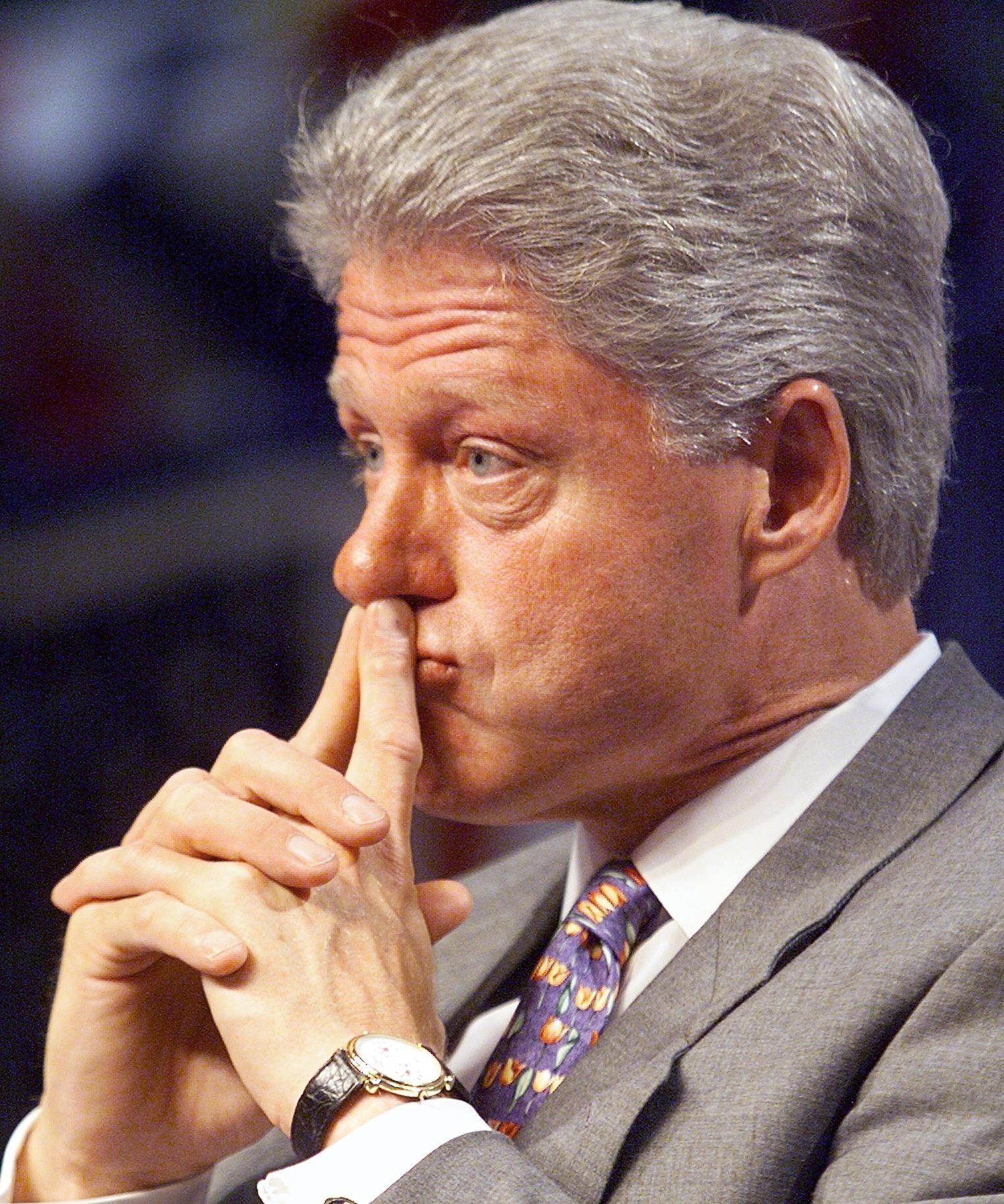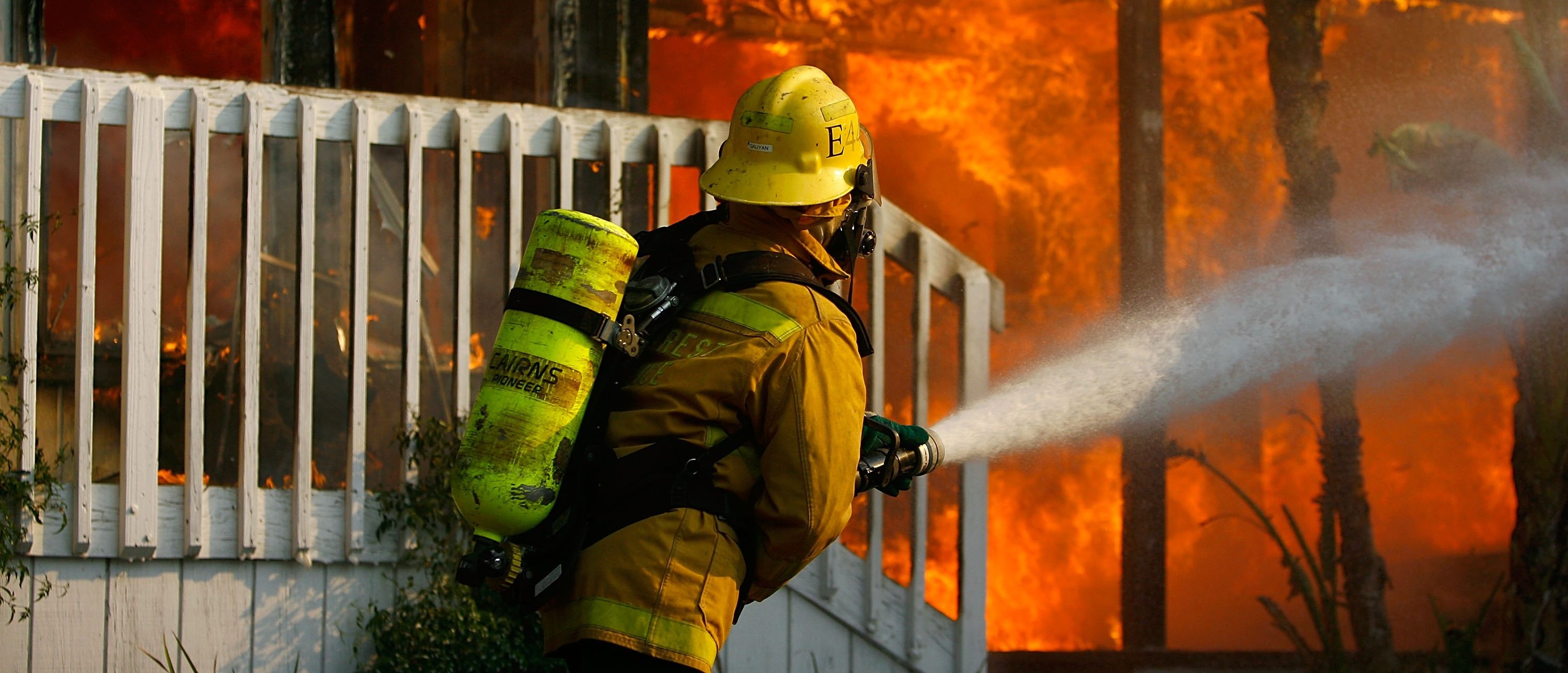CORRECTION: This article has been updated to indicate that other fire suppression policies, which allow forests to accumulate kindling, predated then-President Bill Clinton’s rules. It has also been updated to include arguments that climate change is increasing the severity of wildfires in the West. Additionally, a previous version of this article stated that an average of 10 million feet of timber was removed each year from Forest Service land between 1960 and 1990. The actual number was 10.3 billion. The article has been updated to reflect the change. This post has also been updated to clarify that wildfire fuels such as underbrush increased after Clinton’s Northwest Forest Plan, though logging can, in some instances, increase the risk of forest fires. A citation to a study noting that the plan was inconsistent with managing fire-frequent forests was also added to this post.
- Former President Bill Clinton’s land management rules and other liberal policies paved the way for future debilitating wildfires, fire expert Bob Zybach told the Daily Caller News Foundation.
- Zybach warned of potential disastrous wildfires shortly after Clinton signed a slate of rules in the mid-1990s that, according to a study published in the Ecological Society of America in 2019, was “inconsistent with management for … historically fire-frequent forests.”
- Zybach’s comments come as California, Oregon, and parts of Washington deal with catastrophic wildfires that have killed 26 people and destroyed buildings.
Former President Bill Clinton made a significant change to federal land management nearly 30 years ago that created conditions necessary to increase the severity of wildfires on the West Coast, according to one fire expert who predicted the problem years ago.
Shortly before leaving office in 2001, Clinton limited the ability of the United States Forest Service to thin out a dense thicket of foliage and downed trees on federal land to bring the West into a pristine state, Bob Zybach, an experienced forester with a PhD in environmental science, told the Daily Caller News Foundation. The former president’s decision created a ticking time bomb, Zybach argues.
“If you don’t start managing these forests, then they are going to start burning up. Thirty years later, they are still ignoring it,” said Zybach, who spent more than 20 years as a reforestation contractor. He was referring to warnings he made years ago, telling officials that warding off prescribed burns in Oregon and California creates kindling fueling fires.
Such rules make it more difficult to deploy prescribed burns, which are controlled burns designed to cull all of the underbrush in forests to lessen the chance of massive fires, Zybach noted. Years of keeping these areas in their natural state result in dead trees and dried organic material settling on the forest floor, turning such material into matchsticks soaked in jet fuel during dry seasons, he said.
Zybach’s comments come as wildfires continue churning through parts of California, Oregon and Washington, media reports show. Fires have killed 26 people in West Coast states since August, including 19 people in California, and have culminated in more than half-a-million people evacuating Oregon, a number representing roughly 10% of the state’s overall population.
Roughly 100 massive fires are blazing Saturday in the West, including 12 in Idaho and nine in Montana, the National Interagency Fire Center said Saturday. All told, the wildfires have churned through more than 4.5 million acres in 12 states. (RELATED: Wildfires, Blackouts And High Gas Prices: Californians Fight Familiar Foes Amid Pandemic)

Former President Bill Clinton (LUKE FRAZZA/AFP via Getty Images)
Shortly before leaving office, Clinton introduced the Roadless Rule that restricted the use of existing roads and construction of new roads on 49 million acres of National Forest, making it difficult for officials to scan the land for the kind of kindling that fuels massive conflagrations.
The move was part of the Northwest Forest Plan (NWFP), a resolution adopted by Clinton in 1994 in order to settle ongoing disputes between economic and environmental interests, according to The New York Times. The plan was intended to protect certain portions of forests while allowing logging in others.
But the plan was “inconsistent with management for ecological integrity in the dry, historically fire‐frequent forests” that make up portions of the protected forests, according to a study published in the Ecological Study of America in 2019.
Meanwhile, fire suppression policies, which began at the beginning of the 20th century, have allowed kindling to accumulate in forests, according to The Guardian.
Ten years before Clinton’s rule, the Fish and Wildlife Service placed the northern spotted owl on the Endangered Species Act, forcing the Forest Service to adopt a new policy that resulted in a greater reduction in timber harvests. The amount of timber removed from federal lands plummeted, according to data accumulated in 2015 by the Reason Foundation.
An average of 10.3 billion feet of timber was removed each year from Forest Service land between 1960 and 1990, the data show. Those numbers dropped between 1991 and 2000 and continued dropping — an average of only 2.1 billion feet of timber was removed from the land between 2000 and 2013, according to the data. That’s an 80% decline.
And while logging can be an ineffective method to preventing forest fires and can, in some instances, cause an increase, according to the BBC, the Times reported that, following the Northwest Forest Plan, wildfire risk grew along with fuels like combustable trees and underbrush.
Actions like “thinning and prescribed fire to reduce fuel continuity” would “promote ecological integrity” in certain portions of forests protected under the plan, according to the Ecological Society of America study.
“They’ve gone and left hundreds of thousands of acres of burnt timber, a fire bomb waiting to happen, standing in place because the black back woodpecker prefers that habitat,” Zybach said. “It’s great for lawyers, but it’s bad for people who breathe air or work in the woods.”
“The prescribed burns are an ancient form of management for keeping the fuels down so these events don’t happen,” Zybach added, referring to Native American Indians who used controlled burns to ward away pests and prevent wildfires from licking their homes.
The Clinton administration’s plan to turn forests in the West into pristine land free of human interference risked fueling “wildfires reminiscent of the Tillamook burn, the 1910 fires and the Yellowstone fire,” Zybach, who is based in Oregon, told Evergreen magazine in 1994, when the NWFP came into effect.
Western Oregon had one major fire above 10,000 acres between 1952 and 1987, reports show. The Silver Complex Fire of 1987 snapped that streak after torching more than 100,000 acres in the Kalmiopsis Wilderness area, killing rare plants and trees the federal government sought to protect from human activities.
And the Mendocino Complex Fire is spreading across California and is on its way to becoming the largest wildfire in the state, engulfing more than 283,000 acres.
Zybach said he believes land management, rather than climate change, is increasing the severity of Western wildfires, noting that climate change has little to do with kindling gathering on forest floors.
University of Washington climate scientist Cliff Mass told the DCNF in 2018 that “the key factors are mismanaged forests, years of fire suppression, increased population, people living where they should not, invasive flammable species, and the fact that California has always had fire.”
Other scientists, however, say climate change is the driving cause as summer heat intensifies and further dries out dead brush on forest floors.
The Washington Post reported that the West is becoming hotter, drier and and more susceptible to large blazes. It also pointed to an August study that found fall days in California with extreme fire-weather conditions had more than doubled since the 1980s.
“I can’t say it was unexpected what happened there, but the speed with which it went was mind-blowing to a lot of us,” a U.S. Forest Service research ecologist, Eric Knapp, told the Post, referring to the Creek Fire. Climate change increased the likelihood and severity of a drought that killed trees ahead of the fire in that region, according to the Post.
Meanwhile, former President Barack Obama tweeted: “The fires across the West Coast are just the latest examples of the very real ways our changing climate is changing our communities.”
Similarly, Senate Majority Leader Chuck Schumer tweeted: “The proof of the urgency of the climate crisis is literally in the air around us.” The New York Democrat included a link to a Sept. 10 article from CBS blaming climate change for the fires.
Fire Experts Agree: Prescribed Burns Are Critical, Experts Say
Overzealous fire suppression across California are helping to build up wildland fuels, which contribute to wildfires, according to Tim Ingalsbee, a fire ecologist who began a career in the 1980s as a wildland firefighter. The solution is “to get good fire on the ground and whittle down some of that fuel load,” he told ProPublica in August.
“It’s just … well … it’s horrible. Horrible to see this happening when the science is so clear and has been clear for years. I suffer from Cassandra syndrome,” Ingalsbee said, referring to a Greek metaphor people use when they believe their valid warnings are ignored.
“Every year I warn people: Disaster’s coming,” he said. “We got to change. And no one listens. And then it happens.”
Other experts have made similar arguments in the past. (RELATED: Decades Of Mismanagement Turned US Forests Into ‘Slow-Motion Time Bombs’)

A US forestry firefighter cools a burning modular home Photo by David McNew/Getty Images)
Overgrown grasslands, forests, and woodlands contributed to California wildfires in 2017, Sasha Berleman, a fire ecologist, told High Country News that year.
“I’m more certain than ever that there’s a lot we can do between now and the next time this happens to make it so that the negative consequences to people are nowhere near as dramatic,” she said.
The devastating fires that ran through California’s wine country in October of 2017 killed 42 people and destroyed nearly 7,000 buildings, High Country News noted.
The solution might be easier said than done. Nearly 20 million acres in California, or an area about the size of Maine, will need to experience controlled burns to limit catastrophic wildfires, a January study from Nature Sustainability found.
All content created by the Daily Caller News Foundation, an independent and nonpartisan newswire service, is available without charge to any legitimate news publisher that can provide a large audience. All republished articles must include our logo, our reporter’s byline and their DCNF affiliation. For any questions about our guidelines or partnering with us, please contact licensing@dailycallernewsfoundation.org.


